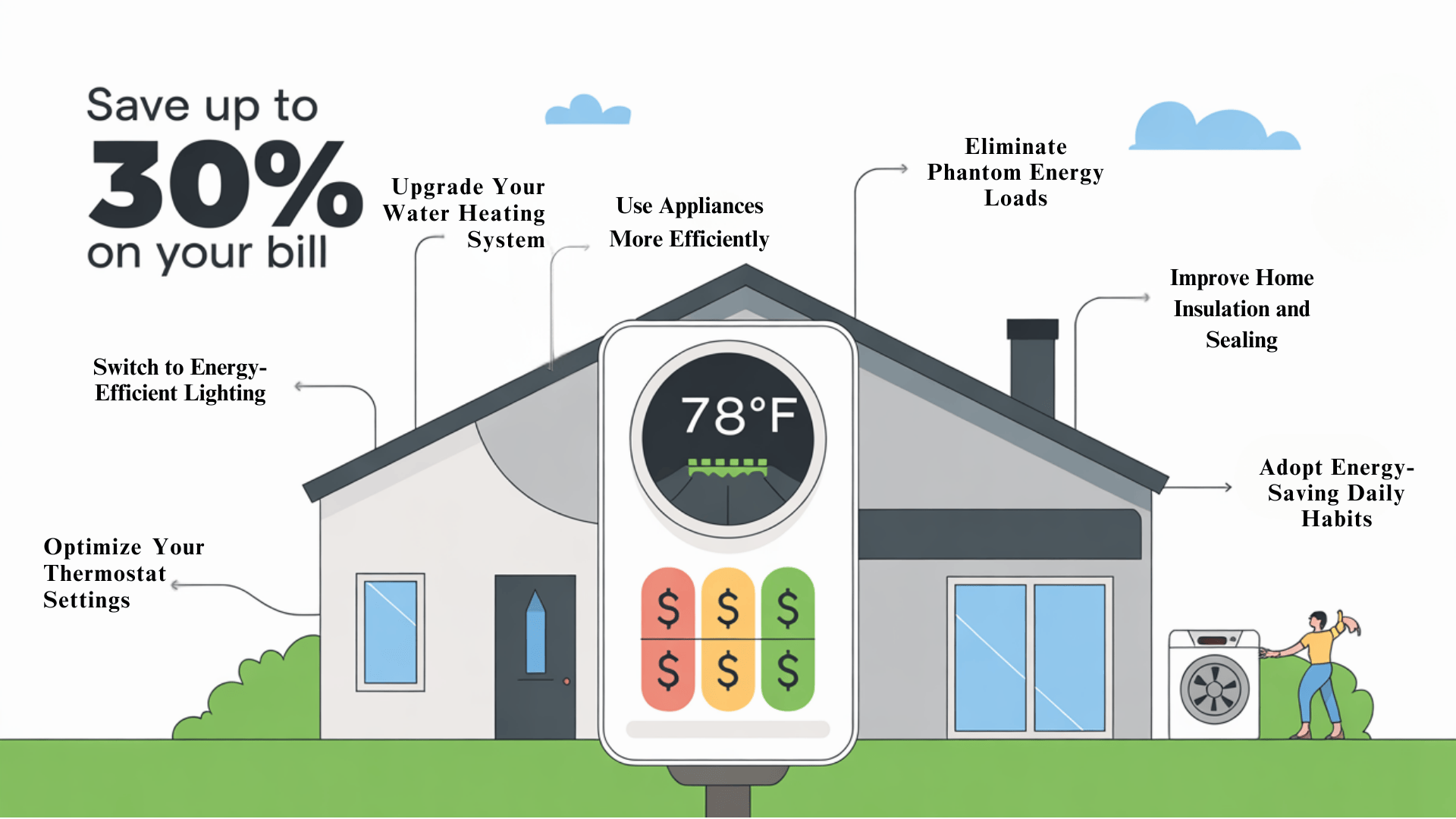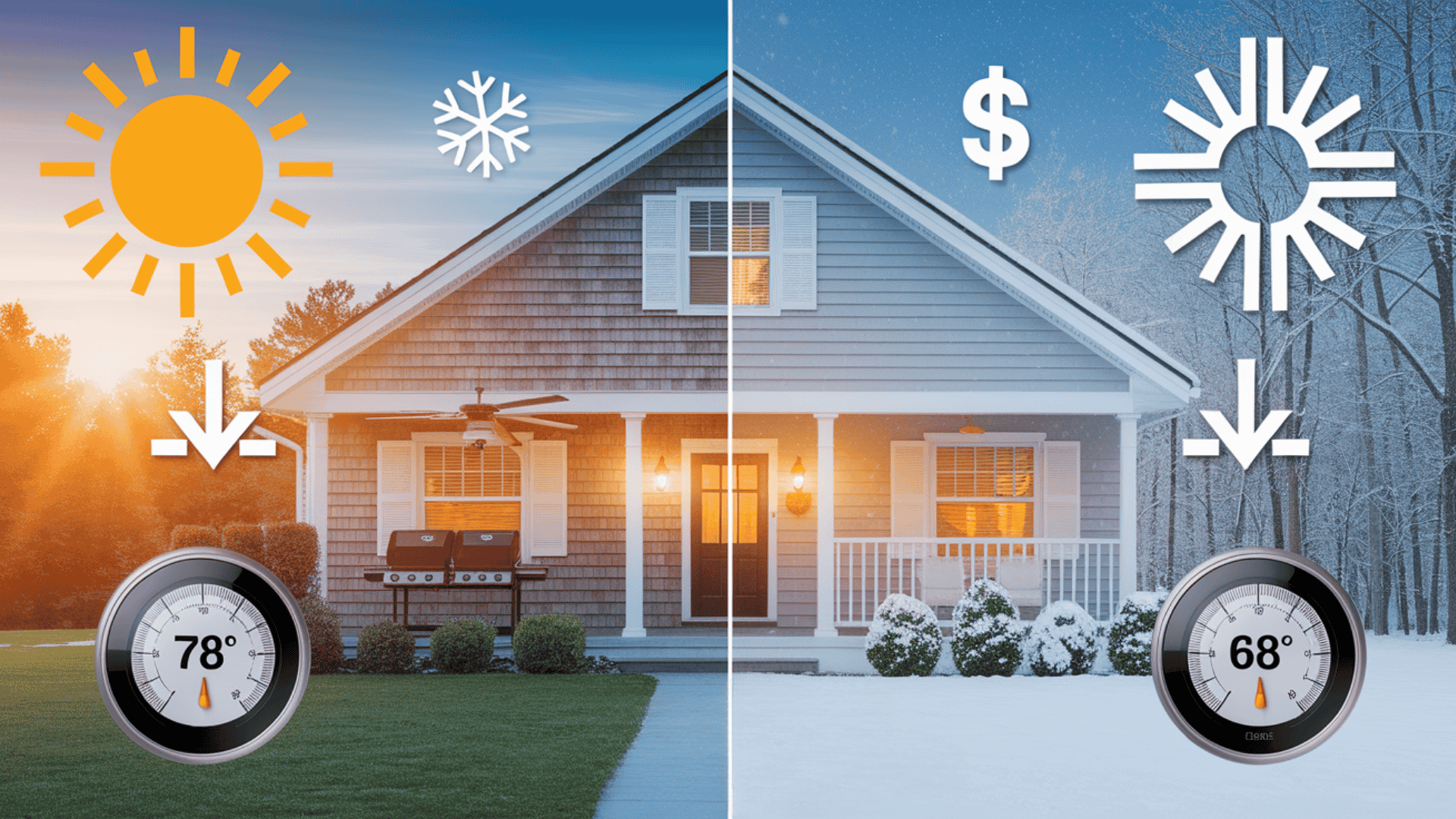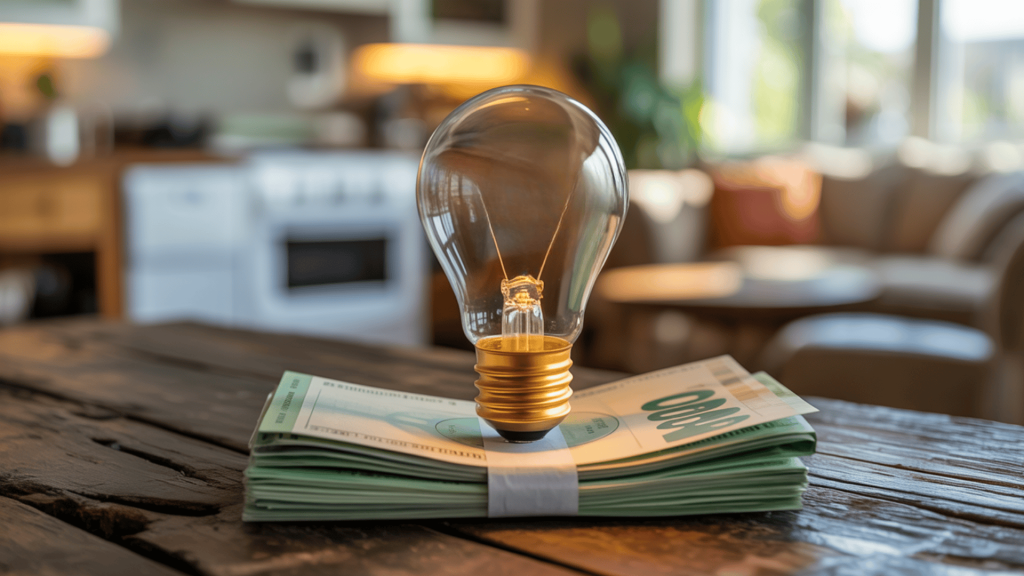Are you tired of opening your monthly electricity bill and feeling shocked by the amount? You’re not alone.
Many homeowners struggle with rising energy costs that seem to grow bigger each month. The good news is that small changes in your daily habits can lead to significant savings.
In this blog, I’ll share practical tips to reduce your electricity bill costs without sacrificing comfort. These proven methods don’t require expensive equipment or major lifestyle changes.
Let’s start saving money today.
Why Your Electricity Bill Keeps Growing
Before we jump into money-saving tips, it’s important to understand what drives up your electricity costs. Your monthly bill depends on several factors that you can control.
Main factors affecting your electricity bill:
- Heating and cooling systems – These use about 50% of your home’s energy
- Water heating – Takes up roughly 18% of energy usage
- Appliances and electronics – Account for about 17% of consumption
- Lighting – Uses around 5% of your total energy
Understanding these numbers helps you focus on areas where you can make the biggest impact on your bill.
7 Proven Tips to Reduce Electricity Bill

These simple strategies can reduce your monthly bill by 20-40% without major changes.
1. Optimize Your Thermostat Settings
Your heating and cooling system accounts for approximately 50% of your home’s energy consumption. Smart temperature management is the fastest way to see real savings on your monthly bill.
Temperature settings that save money:
- Set to 78°F in summer when home, 82°F when away – this single change can reduce cooling costs by 15-20%
- Keep at 68°F in winter during the day, 65°F at night – lowering by just 1 degree saves about 3% on heating bills
- Use programmable settings to automate changes – prevents forgetting to adjust temperatures when leaving home
- Drop the temperature 7-10 degrees for 8 hours daily – can save up to 10% annually on energy costs
2. Switch to Energy-Efficient Lighting
Old bulbs waste energy as heat and need frequent replacement. Modern LED lights use 75% less energy and last 25 times longer than traditional bulbs.
Smart lighting strategies:
- Replace all bulbs with LED lights – they pay for themselves in 6-12 months through energy savings
- Use natural light during daytime hours – open blinds and curtains to reduce the need for artificial lighting
- Install dimmer switches for adjustable brightness – allows you to use only the light you need
- Turn off lights when leaving rooms – this simple habit can save $50-100 per year
- Use task lighting instead of lighting entire areas – focus light where needed rather than overhead lighting
3. Upgrade Your Water Heating System
Water heating accounts for 18% of your energy costs. Making small adjustments to your heating and hot water usage can result in substantial monthly savings.
Water heating efficiency tips:
- Lower water heater temperature to 120°F – reduces energy use by 6-10% for every 10-degree reduction
- Install low-flow showerheads and faucet aerators – can cut hot water use by up to 60% without losing pressure
- Take shorter showers (aim for 5 minutes) – each minute saved can reduce water heating costs by 2-5%
- Fix leaky hot water faucets immediately – a single dripping faucet wastes 3,000+ gallons annually
- Insulate your water heater tank – reduces heat loss by 25-45% and saves 7-16% on water heating bills
4. Use Appliances More Efficiently
Your kitchen and laundry appliances can be energy hogs when used incorrectly. Following these simple guidelines helps them run more efficiently and use less power.
Appliance efficiency methods:
- Run dishwasher and washing machine with full loads only – partial loads use nearly the same energy as full ones
- Use cold water for washing clothes when possible – heating water accounts for 90% of washing machine energy use
- Clean dryer lint trap after every use – blocked vents make dryers work 30% harder and use more energy
- Keep the refrigerator at 37-40°F, freezer at 5°F – temperatures outside this range waste energy without improving food safety
- Use microwave or toaster oven for small meals – they use 50-80% less energy than full-size ovens
5. Eliminate Phantom Energy Loads
Many devices continue using power even when turned off. This “phantom load” can add $100 or more to your yearly electricity bill without you realizing it.
Ways to stop phantom energy waste:
- Unplug electronics when not in use – TVs, computers, and stereos draw power even when turned off
- Use power strips to easily turn off multiple devices – one switch can control several electronics at once
- Unplug phone chargers when not charging – they continue drawing small amounts of power when plugged in
- Turn off TVs, computers, and gaming systems completely – standby mode still consumes 5-15% of normal power
- Switch off coffee makers and small appliances – these devices can use surprising amounts of standby power
6. Improve Home Insulation and Sealing
Air leaks and poor insulation force your heating and cooling systems to work harder. Sealing these gaps is one of the most cost-effective ways to reduce energy consumption.
Insulation and sealing improvements:
- Add weatherstripping around doors and windows – prevents heated or cooled air from escaping outside
- Caulk cracks and holes in walls and foundations – even small gaps can waste significant energy over time
- Install door sweeps to block air gaps – stops conditioned air from flowing under doors
- Close vents in unused rooms – redirects airflow to occupied areas for better efficiency
- Use curtains or blinds to block summer heat – reduces cooling load by up to 33% on sunny days
7. Adopt Energy-Saving Daily Habits
Small changes in your routine cost nothing but can significantly impact your monthly electricity bill. These habits become automatic with practice, providing ongoing savings.
Daily habits that save energy:
- Close curtains during hot summer afternoons – keeps indoor temperatures 10-15 degrees cooler naturally
- Open windows for natural cooling when the weather permits – eliminates the need for air conditioning on mild days
- Use fans instead of air conditioning when possible – ceiling fans use 90% less energy than AC units
- Hang clothes outside to dry on sunny days – completely eliminates dryer energy use for that load
- Turn off computers and monitors when finished working – saves more energy than using sleep mode
Seasonal Strategies for Year-Round Savings

Different seasons require different approaches to keep your electricity costs low. Adapting your habits throughout the year can help you maximize your annual savings.
Summer energy-saving strategies:
- Use ceiling fans to circulate cool air – allows you to set the thermostat 4 degrees higher while staying comfortable
- Block sunlight with curtains during peak heat hours, and reduce indoor temperature by 10-15 degrees naturally
- Grill outdoors to avoid heating your kitchen – keeps indoor heat load lower during hot weather
- Set air conditioning to higher temperatures when away – every degree higher saves 6-8% on cooling costs
Winter cost-cutting methods:
- Let sunlight warm rooms naturally during the day – open south-facing curtains to capture free solar heat
- Use space heaters for occupied rooms only, and heat specific areas instead of the entire home
- Reverse ceiling fan direction to push warm air down – redistributes heated air that rises to the ceiling
- Lower thermostat at night and when away from home – sleeping under blankets allows a 10-15 degree temperature drop
Common Mistakes That Increase Electricity Bills
Avoiding these common errors can prevent unnecessary increases in your monthly electricity costs and help maintain your savings over time.
| Common Mistake | Why It Wastes Energy | Easy Fix |
|---|---|---|
| Setting the thermostat too low in summer | Forces AC to work harder and run longer | Keep at 78°F or higher when home |
| Leaving electronics in standby mode | Devices still draw 5-15% of normal power | Use power strips to completely shut off |
| Using the heated dry setting on the dishwasher | Uses extra energy for an unnecessary feature | Select air-dry or open the door after washing |
| Ignoring air leaks around windows | Let’s condition the air to escape continuously | Add weatherstripping and caulk gaps |
| Putting hot food in the refrigerator | Makes the fridge work harder to cool down | Let food cool to room temperature first |
When to Consider Professional Help?
Sometimes professional assistance can identify hidden inefficiencies and provide bigger savings opportunities than DIY methods alone.
Consider consulting experts when your bills suddenly spike without explanation, your HVAC system requires frequent repairs, or your home feels drafty despite your efforts to seal it.
Professional energy audits, HVAC tune-ups, and electrical inspections often pay for themselves through the savings they identify and can spot problems you might miss on your own.
Closing Remarks
Reducing your electricity bill begins with understanding where your energy is used and making informed changes to your daily habits.
The tips covered in this guide can help you save hundreds of dollars annually without major lifestyle sacrifices.
Start with thermostat adjustments and LED lighting upgrades for quick wins, then gradually add more strategies as they become routine.
Remember that consistency matters more than perfection.
Implementing just 3-4 of these tips can reduce your electricity bill costs and make a noticeable difference in your monthly expenses. Small changes today lead to significant savings over time.
What’s the first energy-saving tip you plan to implement in your home this week?





































